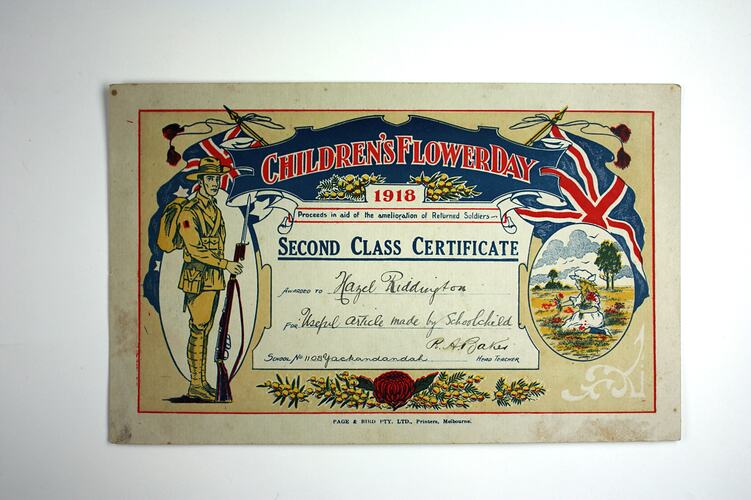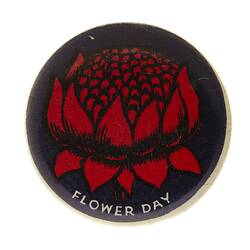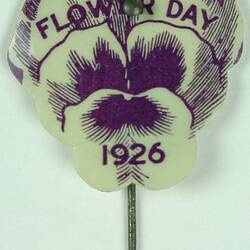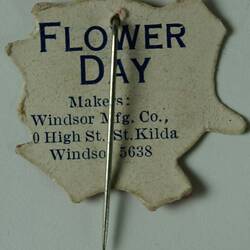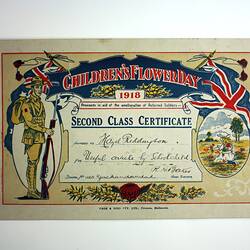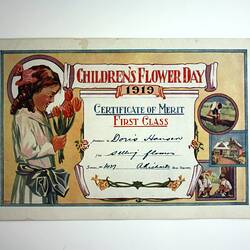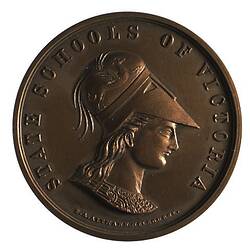Summary
Children's Flower Day certificate. Made by Page & Bird Pty Ltd, Printers, Melbourne, 1918.
Presented as part of a fundraising effort by Victorian schoolchildren for the war effort in World War I.
Flower Day had its origins in the League of Young Gardeners, created in Victoria in 1916 to 'swell the war relief fund, by cultivating garden plots at home'. From this movement sprang several 'Flower Days' which raised £126,354 for war relief. In 1916, the Victorian Education Department instructed teachers to promote gardening initiatives, and announced that there would be a November Flower Day. The main event of the Day was to be a fund-raising flower show from school gardens - 'Let the children feel that the show is to be their show', advised Supervisor of School Gardening, Cyril Isaac. At schools, the day consisted of morning lessons on war-related topics; in the afternoon schools set up street stalls to sell bouquets and button holes. The main show was not held in 1918 due to stringent war economies, but £50,000 was still raised. The event petered out after World War I.
Physical Description
Certificate for Children's Flower Day 1918. Printed on cardboard in red, blue, yellow and green. There is a soldier with a rifle, at ease, on the left hand side and an image of a girl with flowers in a paddock with trees on the right hand side. These are under a scroll flanked by British and Australian flags. There is an image of a waratah and wattle at the base of the certificate. There is no writing on the back of the certificate.
More Information
-
Collecting Areas
-
Acquisition Information
Donation from Mrs Hazel Harrop, Apr 1987
-
Printer
Page & Bird Pty. Ltd., Melbourne, Greater Melbourne, Victoria, Australia, 1918
-
Place & Date Used
-
Inscriptions
Text: 'Useful article made by schoolchild'.
-
Classification
-
Category
-
Discipline
-
Type of item
-
Overall Dimensions
25 cm (Length), 15.8 cm (Height)
-
References
Information on Flower Day from the Australian War Memorial web site - record for REL39124 - Fundraising badge : Children's Flower Day 1919 Peace Year, [Link 1] accessed 27/9/2012; and Rosalie Triolo, 2012. 'Our Schools and the War', pp. 88-90. For related secondary references, see Supplementary File 96.199
-
Keywords
Flower Days, Handcrafts, Wars & Conflicts, World War I Fundraising, World War I, 1914-1918
